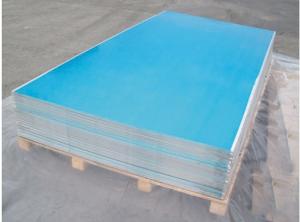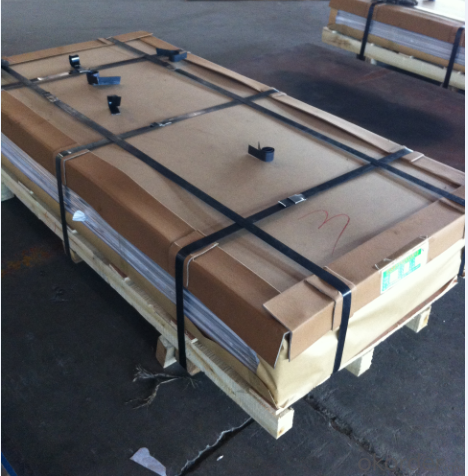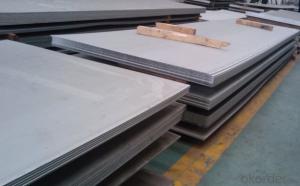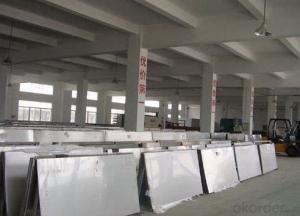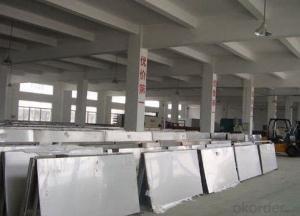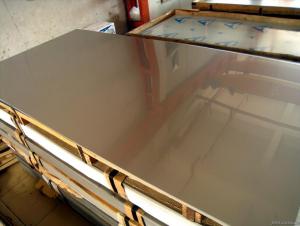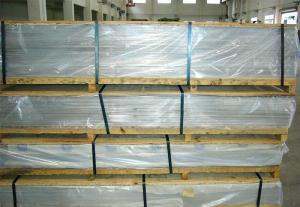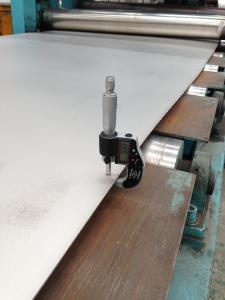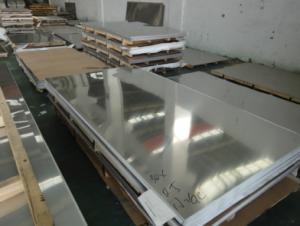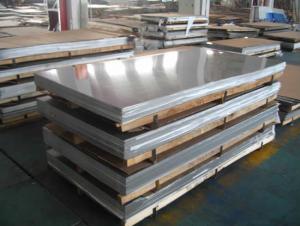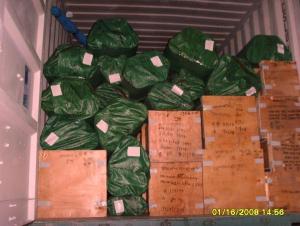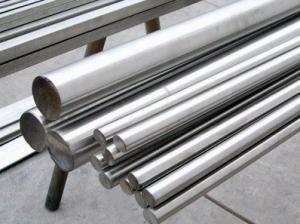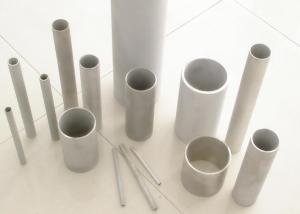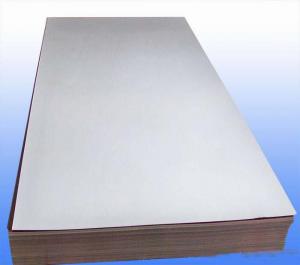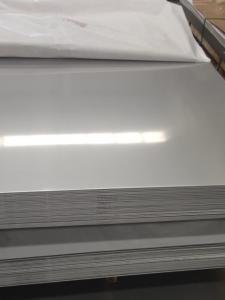Stainless Steel Sheet With Best Price Warehouse
- Loading Port:
- Shanghai
- Payment Terms:
- TT or LC
- Min Order Qty:
- 4 kg
- Supply Capability:
- 2000 kg/month
OKorder Service Pledge
OKorder Financial Service
You Might Also Like
1.Structure of Product Description
Cold rolled Stainless steel sheet is widely used in the field of construction field and decoration field, etc. There are many different grades, such as: 200 series, 300 series, 400 series, 900series, etc. The detailed grade are as follows: 201, 202, 301, 304, 316, 410, 420, 430, etc.
The surface is including 2B, BA, Mirror Finish, Checkered, etc.
2. Main features of the product
a. Competitive price
b. Frist-Class Service.
c. Shortest service.
3. Image.
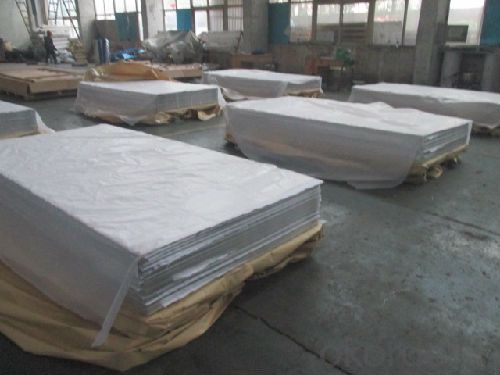
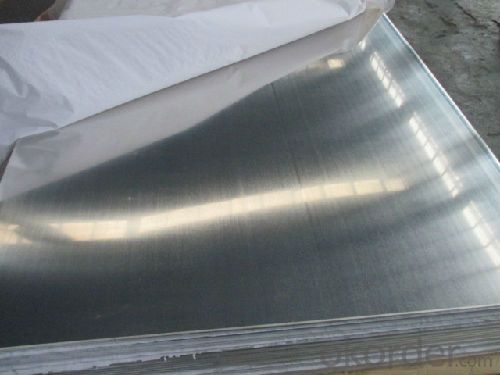
4. Product detailed sizes:
1000mm*2000mm, 1219mm*2438mm,1220mm*2440mm, 1250mm*2500mm,1500mm*3000mm, etc.
5. FAQ:
What is the quality standard?
---Usually our standard is GB3880-2006 or else.
What is the width range?
---It is from 1000mm to 2500mm, etc.
What is the length range?
---It is from 2000mm to 6000mm, etc.
What is the MOQ for your products yet?
---Normally it is around 3 tons/each size.
How many tons did you export in one year?
---Normally it is around 9000 tons totally.
Where is your client from?
---Normally UAE, FRANCE, USA, BANGLADESH, ETC.
---Normally they are stainless steel sheet, stainless steel coil, stainless steel checkered sheet, stainless steel mirror finished sheet, color coated stainless steel sheet, etc.
- Q: Which is better, stainless steel plate kitchen?
- Popularly speaking, stainless steel is not easy to rust steel, in fact, part of stainless steel, both rust resistance, but also acid resistance (corrosion resistance). Stainless steel stainless steel and corrosion resistance is on the surface of chromium rich oxide film (film) formation. The rust resistance is relative to that of corrosion resistance. The test shows that the steel in the atmosphere, water and other medium and weak acid oxidizing medium, the corrosion resistance increased with the increase of water content of chromium in steel, when the chromium content reaches a certain percentage, the steel corrosion resistance mutation from rust to rust, corrosion and corrosion resistance to never. There are many classifications of stainless steels.
- Q: Are stainless steel sheets resistant to UV radiation?
- Yes, stainless steel sheets are generally resistant to UV radiation. The chromium content in stainless steel helps to form a protective oxide layer, which acts as a barrier against UV rays. This makes stainless steel a durable and reliable material for outdoor applications that are exposed to sunlight. However, prolonged exposure to intense sunlight may cause some slight discoloration or fading over time.
- Q: What are the benefits of using embossed stainless steel sheets in elevator doors?
- There are several benefits of using embossed stainless steel sheets in elevator doors. Firstly, the embossed pattern adds a visually appealing and aesthetic element to the elevator doors, enhancing the overall appearance of the elevator interior. This can create a more luxurious and sophisticated atmosphere for passengers. Secondly, embossed stainless steel sheets are highly durable and resistant to scratches, dents, and corrosion. Elevator doors are subjected to constant use and can be easily damaged, but the use of embossed stainless steel sheets ensures that the doors maintain their pristine condition for a longer period of time. This durability also reduces maintenance and replacement costs over the lifespan of the elevator. Additionally, embossed stainless steel sheets provide a high level of hygiene. Stainless steel is inherently resistant to bacteria and germs, making it an ideal material for elevator doors. The embossed pattern further aids in hiding fingerprints and smudges, ensuring that the doors remain clean and sanitary with minimal maintenance. Moreover, embossed stainless steel sheets offer excellent fire resistance properties. Elevators are enclosed spaces, and in the unfortunate event of a fire, the use of embossed stainless steel sheets in the doors can help contain the flames and prevent the spread of fire, providing an added level of safety for passengers. Lastly, embossed stainless steel sheets are easy to clean and maintain. With a smooth surface and resistance to stains and dirt, these sheets can be easily wiped down with a mild cleaner, keeping the elevator doors looking pristine and reducing the amount of time and effort required for cleaning. In summary, the benefits of using embossed stainless steel sheets in elevator doors include enhanced aesthetics, durability, hygiene, fire resistance, and ease of maintenance. These advantages make embossed stainless steel sheets a popular choice for elevator manufacturers and building owners alike.
- Q: What is the difference between hot rolled and cold rolled stainless steel sheets?
- Hot rolled and cold rolled stainless steel sheets differ in their manufacturing process, resulting in distinctive characteristics and properties. Hot rolled stainless steel sheets are manufactured by passing the stainless steel through a series of rollers at a high temperature. This process results in a thicker and rougher surface compared to cold rolled sheets. Hot rolling allows for faster production and is generally more cost-effective. However, the rougher surface may require additional processing, such as grinding or polishing, to achieve the desired finish. On the other hand, cold rolled stainless steel sheets are manufactured by cooling the hot rolled sheets and then annealing them in a controlled environment. This process improves the surface finish, resulting in a smoother and more uniform appearance. Cold rolling also allows for tighter tolerances and greater strength, making it suitable for applications that require precise dimensions and superior mechanical properties. In terms of strength and hardness, cold rolled stainless steel sheets generally exhibit greater strength and hardness compared to hot rolled sheets. This is due to the strain hardening that occurs during the cold rolling process. Cold rolled sheets are also less susceptible to deformation and warping, making them ideal for applications where flatness is critical. In summary, the main differences between hot rolled and cold rolled stainless steel sheets lie in their manufacturing process, surface finish, dimensional tolerance, and mechanical properties. Hot rolled sheets are thicker and have a rougher surface, while cold rolled sheets are thinner, smoother, and exhibit greater strength and hardness. The choice between the two depends on the specific requirements of the application and the desired aesthetic and functional characteristics.
- Q: Are stainless steel sheets suitable for marine propellers?
- Yes, stainless steel sheets are suitable for marine propellers. Stainless steel is highly resistant to corrosion and provides excellent strength and durability, making it ideal for marine environments where propellers are constantly exposed to water and salt. Additionally, stainless steel has good performance in terms of balancing, vibration, and noise reduction, making it a preferred choice for marine propellers.
- Q: Can stainless steel sheets be cut or shaped?
- Indeed, specific requirements can be met by cutting or shaping stainless steel sheets. This adaptable material lends itself to facile manipulation through a variety of cutting and shaping techniques. The act of cutting stainless steel sheets can be accomplished using methodologies including shearing, laser cutting, or waterjet cutting. Shape alteration of stainless steel sheets can be realized through procedures such as bending, rolling, or stamping. The application of these techniques permits the creation of diverse forms and designs, rendering stainless steel sheets a favored selection in industries such as construction, automotive, and manufacturing.
- Q: Can stainless steel sheets be used for stairs and railings?
- Stairs and railings can indeed utilize stainless steel sheets. This remarkably resilient and adaptable material frequently finds its place in architectural and interior design endeavors. With its corrosion resistance, stainless steel proves suitable for outdoor settings and environments with elevated humidity or chemical exposure. The malleability of stainless steel sheets allows for their fabrication into diverse forms and dimensions, rendering them perfect for crafting stairs and railings with an elegant and contemporary appearance. Furthermore, stainless steel boasts effortless cleanliness and maintenance, thus making it a pragmatic selection for high-traffic areas or public spaces.
- Q: What is the impact resistance of stainless steel sheets?
- Due to its unique properties and composition, stainless steel sheets exhibit a high level of impact resistance. This refers to their ability to withstand sudden loads or forces without suffering permanent deformation or breakage. The material possesses exceptional toughness and durability, rendering it highly resistant to impact. The impact resistance of stainless steel sheets can be attributed to their high tensile strength and ductility. This alloy, which contains iron, chromium, and other elements, contributes to its strength and corrosion resistance. The presence of chromium forms a protective oxide layer on the steel's surface, preventing easy rusting or corrosion. Moreover, stainless steel sheets are available in various grades, each with its own composition and properties. The most commonly utilized grade for impact-resistant applications is 304 stainless steel, which offers good resistance against impact and finds widespread use in industries such as construction, automotive, and aerospace. The impact resistance of stainless steel sheets also depends on their thickness. Thicker sheets tend to possess greater impact resistance due to their increased mass and structural integrity. However, even thinner stainless steel sheets can provide significant impact resistance owing to the inherent strength and toughness of the material. In practical applications, stainless steel sheets are frequently employed in environments where impact resistance is vital, such as in the manufacture of machinery, equipment, and structures subject to high loads or potential impacts. They can endure heavy impacts without cracking, fracturing, or deforming, thereby ensuring the integrity and longevity of the final product. Overall, stainless steel sheets exhibit excellent impact resistance, making them a preferred choice in various industries. Their high strength, corrosion resistance, and durability render them suitable for applications where resistance to impact is crucial.
- Q: Can stainless steel sheets be used in outdoor applications?
- Yes, stainless steel sheets can be used in outdoor applications. Stainless steel is highly resistant to corrosion and rust, making it an ideal material for outdoor use. It can withstand exposure to various weather conditions and is commonly used in outdoor structures, appliances, and decorative elements.
- Q: Can stainless steel sheets be used in high-pressure environments?
- Yes, stainless steel sheets can be used in high-pressure environments. Stainless steel is known for its excellent strength, durability, and corrosion resistance, making it suitable for applications that require withstanding high pressure conditions. The material's ability to resist deformation and maintain its integrity under extreme pressure makes it a preferred choice in industries such as oil and gas, chemical processing, and aerospace.
Send your message to us
Stainless Steel Sheet With Best Price Warehouse
- Loading Port:
- Shanghai
- Payment Terms:
- TT or LC
- Min Order Qty:
- 4 kg
- Supply Capability:
- 2000 kg/month
OKorder Service Pledge
OKorder Financial Service
Similar products
Hot products
Hot Searches
Related keywords
